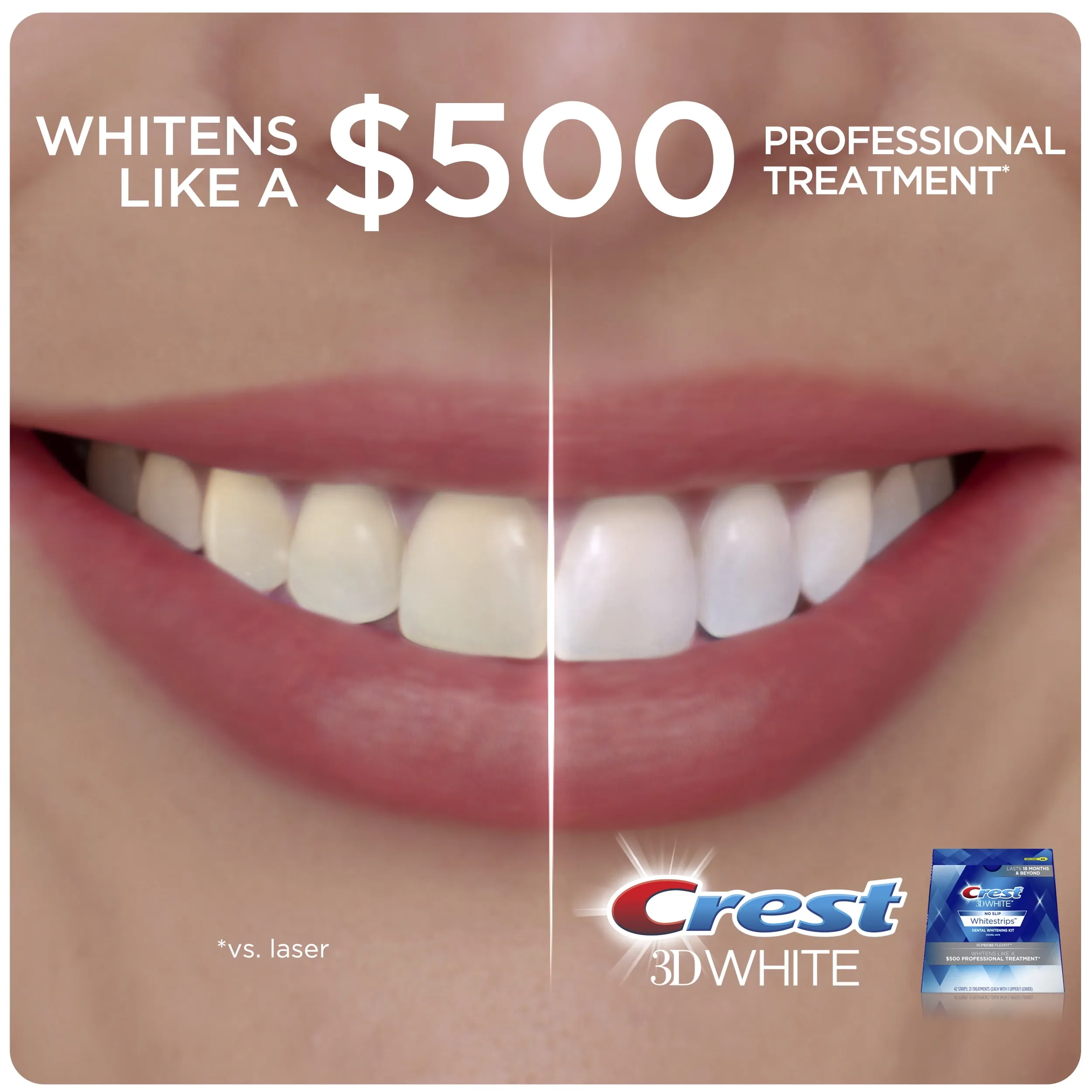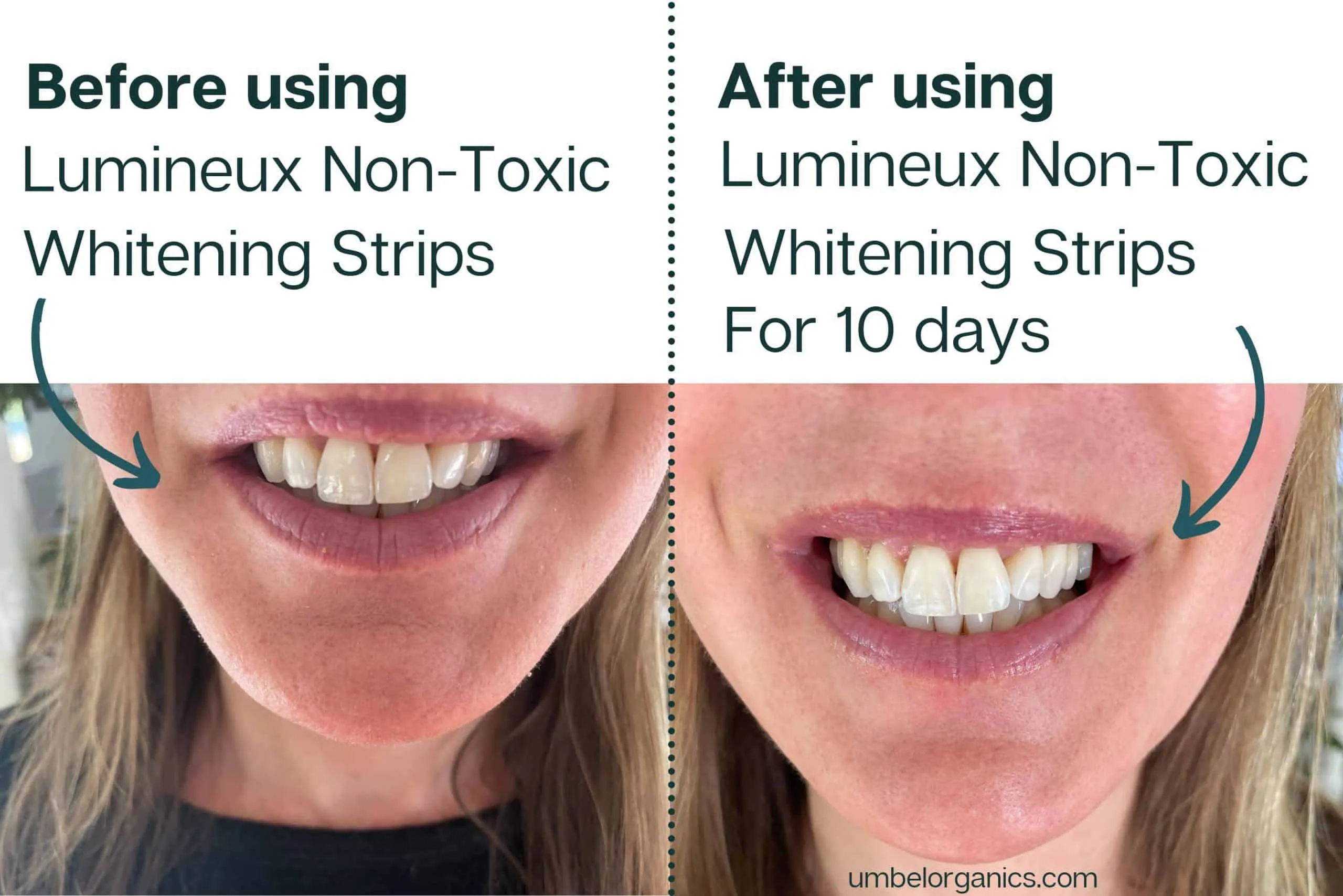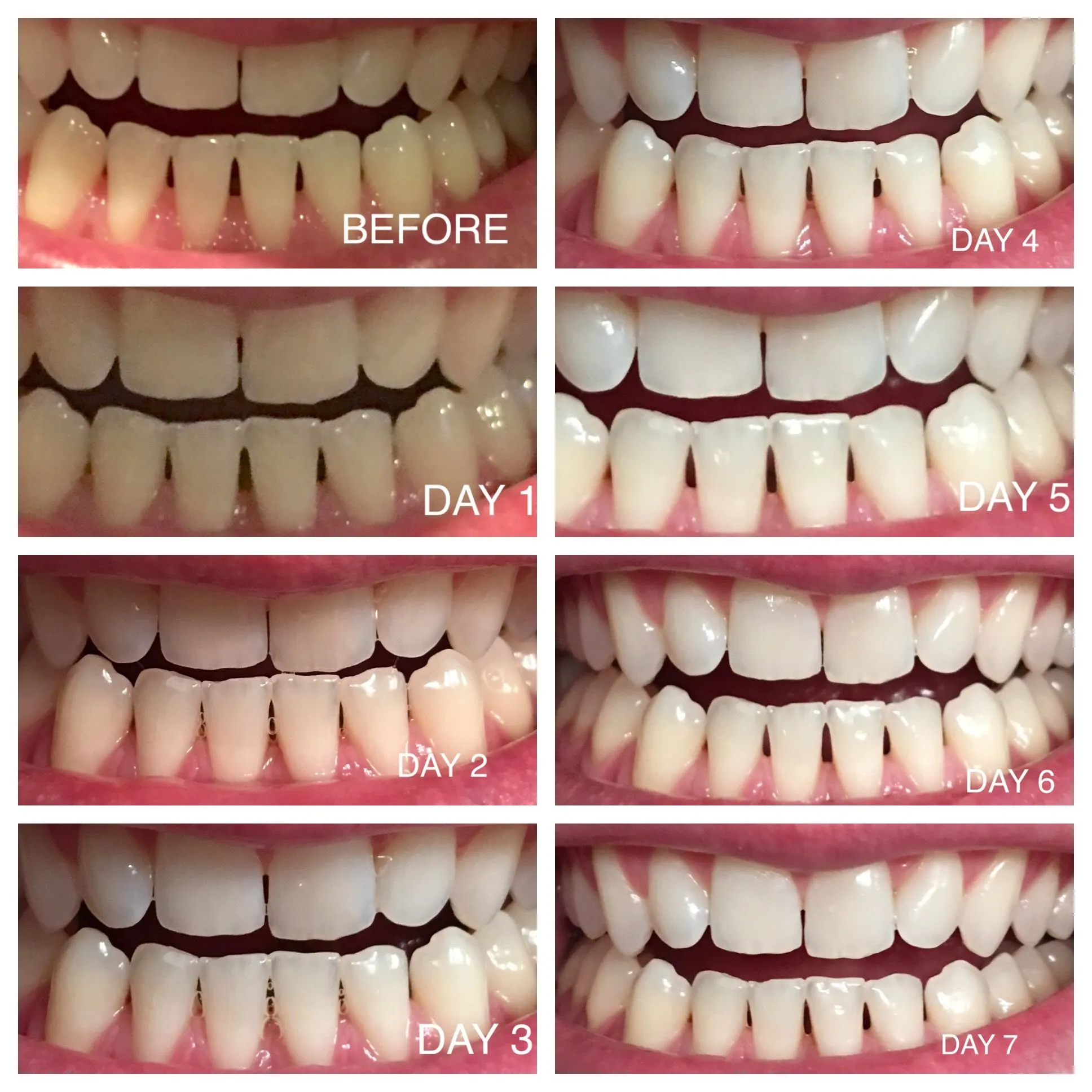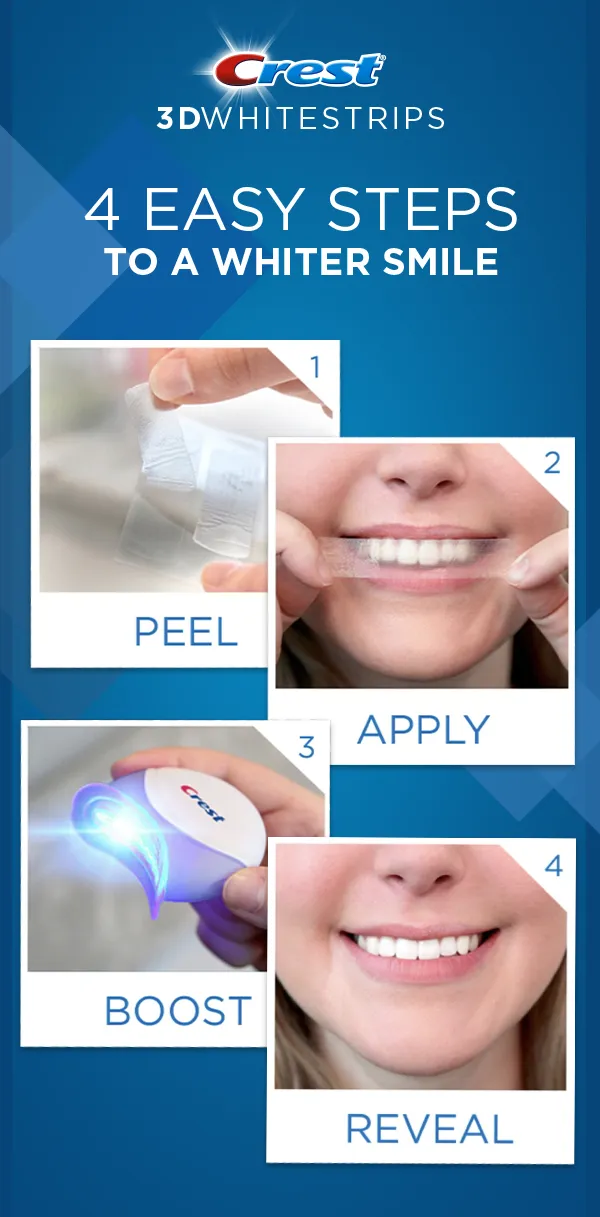What Are Teeth Whitening Strips?
Teeth whitening strips are a popular and convenient method for improving the appearance of your smile. These thin, flexible strips are coated with a whitening agent, typically a peroxide-based solution, designed to adhere to the surface of your teeth. They are readily available over-the-counter, making them an accessible option for individuals looking to brighten their teeth at home. The appeal lies in their ease of use, affordability, and the promise of a whiter smile without the need for professional dental treatments. These strips are designed to be applied directly to the teeth, covering the visible surfaces and delivering the whitening agent directly to where it’s needed. The strips are usually worn for a specific period, as indicated on the product packaging, and the process is repeated over several days or weeks to achieve the desired results. The convenience and relatively low cost make them a favorite for many, and the market is flooded with different brands and formulations, each claiming superior results.
How Do Teeth Whitening Strips Work?
Teeth whitening strips work through a chemical process that targets the stains and discoloration on your teeth. The active ingredients, usually hydrogen peroxide or carbamide peroxide, penetrate the enamel and break down the stain molecules. These stain molecules, formed from food, drinks, and other factors, get trapped within the microscopic pores of the enamel. The peroxide agents oxidize these molecules, effectively decolorizing them and making the teeth appear whiter. The design of the strips is critical to this process, as they are made to adhere closely to the tooth surface, maximizing contact between the whitening agent and the enamel. The strips’ flexibility allows them to conform to the shape of your teeth, ensuring even distribution of the whitening agent. Over time, as the peroxide continues to work, the accumulated stains are broken down, leading to a gradual improvement in the brightness and overall appearance of your teeth. The effectiveness of the strips relies on consistent use and the specific concentration of the whitening agent in the product.
Whitening Ingredients in Strips

The core of teeth whitening strips’ effectiveness lies in their active ingredients. These compounds are responsible for breaking down stains and achieving a brighter smile. The most common ingredients used in teeth whitening strips are hydrogen peroxide and carbamide peroxide. These peroxides act as oxidizing agents, which means they react with the stain molecules present in your teeth. The concentration of these ingredients varies among different products, with higher concentrations potentially leading to faster results but also increasing the risk of sensitivity. The formulations are designed to be safe for use, provided instructions are followed carefully. However, understanding the role and potential effects of these ingredients is essential when choosing a product.
Hydrogen Peroxide
Hydrogen peroxide is a widely used ingredient in teeth whitening products due to its potent bleaching properties. It is a strong oxidizing agent that effectively breaks down stain molecules within the enamel of your teeth. The hydrogen peroxide molecules penetrate the enamel and react with the discolored compounds, effectively dissolving them. This process leads to the gradual lightening of the teeth and a noticeable improvement in their appearance. The concentration of hydrogen peroxide in teeth whitening strips can vary, with higher concentrations often promising quicker results but also potentially increasing the risk of sensitivity. Hydrogen peroxide is generally considered safe for use in teeth whitening, but it’s important to follow the manufacturer’s instructions to minimize any potential side effects. The duration of treatment and the frequency of use should also be considered to maximize its benefits. It is a common ingredient in professional whitening treatments performed by dentists, although at higher concentrations.
Carbamide Peroxide
Carbamide peroxide is another common whitening agent found in teeth whitening strips. It is essentially a compound of hydrogen peroxide and urea. When carbamide peroxide comes into contact with water, it breaks down into hydrogen peroxide, which then performs the bleaching action. Carbamide peroxide is often used in lower concentrations than hydrogen peroxide, making it a gentler option for those with sensitive teeth. It releases hydrogen peroxide slowly, which may reduce the risk of irritation or sensitivity. The effectiveness of carbamide peroxide in teeth whitening is well-established. Products containing this ingredient can still deliver significant whitening results over time. The slow-release properties make it a popular choice for those seeking a more comfortable whitening experience. The urea component can also help to moisturize the teeth, further minimizing potential side effects.
Are Teeth Whitening Strips Effective?

The effectiveness of teeth whitening strips can vary depending on several factors, but in many cases, they are a viable method for improving the appearance of your smile. They can be particularly effective for removing surface stains caused by coffee, tea, tobacco, and certain foods. Many users report noticeable whitening results after several days or weeks of consistent use. The degree of whitening achieved often depends on the initial shade of the teeth and the severity of the stains. While teeth whitening strips are generally effective, it’s important to manage your expectations. They may not produce the same dramatic results as professional treatments offered by a dentist. However, they can provide a significant improvement in the overall brightness and appearance of your teeth. Regular use, as directed, and proper oral hygiene practices can help maintain the achieved results and promote long-term oral health. Before starting any whitening treatment, consider consulting with a dentist to assess your suitability and discuss potential outcomes.
Factors Affecting Effectiveness
Several factors can influence the effectiveness of teeth whitening strips. The type and severity of stains play a significant role in how well the strips perform. The initial shade of your teeth will impact the degree of whitening you can achieve. The presence of dental work, such as fillings or crowns, is a consideration because whitening strips only work on natural teeth. The consistency of use is also critical; following the instructions on the product packaging is essential to get the best results. Additionally, individual factors, such as the enamel’s porosity and the overall health of your teeth and gums, can affect the outcome. Therefore, understanding these factors can help you better manage expectations and determine the suitability of teeth whitening strips for your specific situation. Proper oral hygiene, including regular brushing and flossing, will also help you maintain the results. It’s important to note that some stains, particularly those caused by medications or internal tooth issues, may not respond to whitening strips.
Severity of Staining
The severity of staining on your teeth is a key factor in determining how effective teeth whitening strips will be. Surface stains, which are typically caused by foods, beverages, and tobacco, are generally easier to remove. Teeth whitening strips can often effectively lighten these stains. Deeper stains, or those that have penetrated the enamel and reached the dentin layer, may be more resistant to treatment. In some cases, the strips may provide some improvement but may not achieve the same level of whitening as they would with less severe staining. The longer the stains have been present, the harder it may be to remove them. Regular use of teeth whitening strips, combined with good oral hygiene practices, can help to address mild to moderate staining effectively. For severe staining or intrinsic discoloration, professional dental treatments might be necessary to achieve the desired outcome. Managing your expectations and understanding the limitations of teeth whitening strips based on the severity of your stains is key to a positive experience.
Type of Stains

The type of stains present on your teeth can also influence the effectiveness of teeth whitening strips. Extrinsic stains, those that are on the surface of the enamel, are generally more responsive to treatment. These stains are often caused by common dietary habits, such as drinking coffee, tea, or red wine, or the use of tobacco products. Intrinsic stains, which originate from inside the tooth structure, are often more difficult to treat with over-the-counter whitening strips. These types of stains can be caused by factors like genetics, certain medications, or excessive fluoride exposure during childhood. Whitening strips can still produce some results in these cases, but the outcome might not be as dramatic. Understanding the nature of your stains can help you manage your expectations and choose the most appropriate whitening strategy. Consulting with a dentist can also help to identify the type of staining you have and recommend the most effective treatment options.
Consistency of Use
The consistency of using teeth whitening strips is crucial for achieving the desired results. Following the instructions on the product packaging is very important for the effectiveness of the treatment. Skipping applications or reducing the frequency of use can diminish the whitening effects. The strips are designed to be used regularly over a specific period, usually several days or weeks, to allow the whitening agent to effectively break down the stains on your teeth. Be sure to adhere to the recommended duration of wear and the number of treatments per day. This ensures that the active ingredients have enough contact time with your teeth to penetrate the enamel and cause the necessary chemical reactions. Missing doses or shortening the treatment duration can hinder the effectiveness. Maintaining consistency can also lead to a gradual but noticeable improvement in the whiteness of your teeth. Combining the use of teeth whitening strips with good oral hygiene practices, such as brushing and flossing regularly, can further enhance the results. For optimal outcomes, incorporating teeth whitening strips into your daily routine is important.
Pros and Cons of Teeth Whitening Strips
Like any cosmetic procedure, teeth whitening strips have their advantages and disadvantages. Weighing these pros and cons can help you determine if this is the right choice. There are various factors, including convenience, cost-effectiveness, and potential side effects. Understanding both the benefits and drawbacks is important before starting your teeth whitening journey. Being informed allows you to make the best decision for your oral health and cosmetic goals. Consider what is most important to you and what risks you are willing to take.
Pros

Teeth whitening strips offer several benefits that make them an attractive option for many. One of the most significant advantages is convenience. They are easy to use at home, without the need for appointments or dental visits. This also leads to cost savings because over-the-counter strips are generally more affordable than professional treatments. Another advantage is their accessibility. They are available in most drugstores, supermarkets, and online, making them easily obtainable. Many users experience noticeable results, with teeth appearing visibly whiter within a few days or weeks. Furthermore, teeth whitening strips can be a painless and non-invasive way to enhance your smile. They provide a low-commitment solution for those seeking to improve their appearance without undergoing extensive dental procedures. They are a quick and easy way to boost your confidence.
Cons
Teeth whitening strips have some potential drawbacks. One of the most common side effects is tooth sensitivity, which can range from mild discomfort to more intense sensations. Some users experience gum irritation, especially if the strips come into contact with the gums. The effectiveness of teeth whitening strips can vary. They may not be as effective for certain types of stains, and they may not produce the same dramatic results as professional treatments. Whitening strips only work on natural teeth and will not lighten dental work. The whitening results from strips are not permanent and require maintenance treatments. Additionally, they can be time-consuming, requiring consistent application over several weeks to achieve the desired effects. It’s important to carefully consider the potential downsides and consult with a dentist if you have any concerns about sensitivity or oral health.
How to Use Teeth Whitening Strips Correctly
Using teeth whitening strips correctly is essential to maximize their effectiveness and minimize potential side effects. Following the manufacturer’s instructions is critical. Proper preparation, application, and post-application care are crucial for getting the best results. By adhering to these guidelines, you can ensure you get the most out of your teeth whitening journey.
Preparation

Before applying teeth whitening strips, it’s essential to prepare your teeth and gums. Brush your teeth gently to remove any food particles or debris, but avoid brushing immediately before applying the strips. Rinsing your mouth with water can also help prepare the area. Ensure that your teeth are dry before applying the strips, as moisture can affect the adhesion. Avoid using mouthwash immediately before, as this can create a barrier. Read the product instructions carefully. Knowing the recommended duration of wear and frequency of use is important. If you have sensitive teeth, you might consider using a toothpaste designed for sensitive teeth for a few weeks before starting. This helps to reduce sensitivity. If you have any existing dental work, be sure to consult with your dentist to ensure that the strips are suitable for your situation.
Application
Applying the teeth whitening strips correctly is crucial for optimal results. Peel the strip from the backing and carefully apply the gel side to your teeth. Align the strip along the gum line, ensuring that the entire front surface of your teeth is covered. Gently press the strip onto your teeth, and ensure it adheres well, especially to the edges. Fold any excess strip material behind your teeth to secure it in place. Avoid touching your gums as much as possible, as this can lead to irritation. Once the strip is correctly positioned, leave it on for the recommended time. Do not exceed the recommended wear time, as this can increase the risk of side effects like sensitivity. If any gel gets on your gums, wipe it away immediately. Following the manufacturer’s instructions carefully will ensure that you are using the product as intended and maximizing its effectiveness.
Post-Application Care
After removing the teeth whitening strips, it’s important to take proper care of your teeth. Remove the strips carefully and dispose of them appropriately. Rinse your mouth with water to remove any residual gel. Avoid eating or drinking for at least 30 minutes after use to allow the whitening agent to continue working. It is best to avoid foods and drinks that can stain your teeth during and immediately after treatment, such as coffee, tea, and red wine. Brush your teeth gently, using a soft-bristled toothbrush, and avoid aggressive brushing. If you experience any sensitivity, you can use a toothpaste designed for sensitive teeth. Maintain good oral hygiene practices, including brushing twice a day and flossing daily, to maintain the results. Regular dental check-ups are essential for oral health. Following these steps helps maintain the achieved results and promotes healthy teeth and gums.
Are Teeth Whitening Strips Safe?
Teeth whitening strips are generally considered safe when used according to the manufacturer’s instructions. The active ingredients, such as hydrogen peroxide and carbamide peroxide, have been proven to effectively lighten teeth. The safety of these ingredients has been extensively studied and deemed safe for cosmetic use. However, it’s important to be aware of potential side effects and to take precautions to minimize any risks. The Food and Drug Administration (FDA) regulates teeth whitening products to ensure they meet specific safety standards. While teeth whitening strips are readily available over the counter, it’s a good idea to consult with your dentist. They can evaluate your oral health and determine if teeth whitening strips are appropriate for you. If you have any underlying dental conditions, it’s crucial to get professional advice before starting any treatment. Overall, by following the instructions carefully and being mindful of potential side effects, you can safely use teeth whitening strips to improve the appearance of your smile.
Potential Side Effects
Although teeth whitening strips are safe for most, it’s important to be aware of potential side effects. The most common side effects include tooth sensitivity and gum irritation. Tooth sensitivity can manifest as a sharp, temporary pain when consuming hot or cold foods and drinks. Gum irritation may appear as redness, swelling, or discomfort along the gum line. These side effects usually subside within a few days after you stop using the strips. In rare cases, some people may experience other side effects, such as a burning sensation in the mouth or throat. If you experience any severe or persistent side effects, stop using the product immediately. Consider consulting a dentist to discuss your symptoms. Some individuals with existing dental conditions, such as cavities or gum disease, may be more prone to side effects. Always follow the manufacturer’s instructions carefully to minimize the risk of side effects. Using a toothpaste designed for sensitive teeth and avoiding excessive use can also help to alleviate symptoms.
Alternatives to Teeth Whitening Strips
Several alternatives to teeth whitening strips are available for improving the appearance of your smile. Depending on your needs and preferences, you might want to try these alternatives. The best option for you will depend on your budget, the level of whitening desired, and the underlying causes of your teeth staining. Here are several effective alternatives.
- Professional Teeth Whitening: This treatment, performed by a dentist, often involves a higher concentration of whitening agents and can produce more dramatic results than over-the-counter products.
- Whitening Toothpastes: These toothpastes contain mild abrasives or chemicals that help remove surface stains and brighten teeth. However, they generally do not provide the same level of whitening as strips or professional treatments.
- Whitening Mouthwashes: These mouthwashes contain hydrogen peroxide or other whitening agents and can help maintain the results of other treatments and further brighten teeth.
- Teeth Whitening Trays: Custom or pre-made trays that hold a whitening gel and fit over your teeth. This method provides more uniform coverage and can be used at home.
Each of these alternatives offers different benefits and drawbacks. Discussing these options with your dentist can help you to make the best choice. They can assess your oral health and determine the most suitable treatment plan. Considering factors such as cost, convenience, and the desired results is essential. By exploring these alternatives, you can make an informed decision about your teeth whitening journey.
